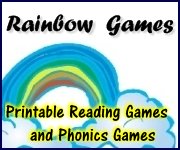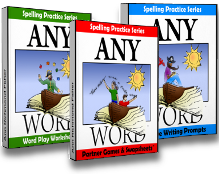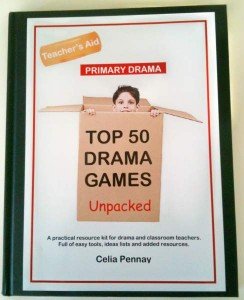The Creative Writing Idea: Your Students' Most Important Task
Finding a creative writing idea is a writer's most important work. Most students know this, and great teachers take every opportunity to help their students locate creative writing ideas. Whether building upon journal writing ideas or extending the imagination based upon favorite fictional characters, it's important to encourage your students to view our fascinating world through a writer's eyes, capturing those bits of life that inspire a creative writing idea.
Whether building upon journal writing ideas or extending the imagination based upon favorite fictional characters, it's important to encourage your students to view our fascinating world through a writer's eyes, capturing those bits of life that inspire a creative writing idea.
Before we discuss a few fun, specific activities, let's touch on some general thoughts on teaching with the ideas trait. In many ways, ideas is the most essential piece of the six trait writing process. Without a creative writing idea, writers don't need to worry about the other traits!
As kids figure out what they want to say on the page, here are some useful creative writing tips to guide their planning:
- Delve into their imaginations and experiences so they have topics that matter to them.
- Ask questions about written drafts that lead them to see other possible directions their writing can take.
- Engage students in conversations about their writing. You'll uncover a wealth of information about their intentions.
- Play music, display intriguing art, and read aloud portions of wonderful books to show your class that ideas can take center stage in a variety of forms.
Generating a Creative Writing Idea: Engaging Activities for That Imaginative Spark
Now that we've discussed some general thoughts about the place of ideas within the six trait writing process, let's take a look at a few enjoyable, hands-on activities that help students reach the goal of a "just right" creative writing idea.Activities for Finding the Right Topic
- This is Special to Me. Gather a collection of treasures from home: a thank you note from a student, a polished gemstone necklace purchased on a vacation, a newspaper clipping announcing your wedding, the collar of a beloved dog or cat are all good choices. Put the objects in a basket and bring them to school. Show the treasures to your students, explaining why each one is emotionally valuable. Invite your students to describe the memories behind special objects of their own. The story behind a treasured item is often the seed of a good creative writing idea. Encourage your students to bring their own little objects to class for an ideas "show-and-tell". Then have each child write about the emotional significance of his or her item, illustrating the object in vivid watercolors, crayons, or markers. Display the finished papers in a class scrapbook or as a bulletin board.
- Candid Portraits. Build a collection of magazine photos of persons expressing strong emotions: happiness, fear, anger, worry, etc. Display individual photos, asking your students these provocative questions: Who is this person? Why is he or she feeling this way? Use student responses as the starting points for an intriguing creative writing idea.
- Narrow It Down! This activity helps students move from a general topic to a more specific one. Randomly select a topic, such as Animals, Holidays, or Sports, writing it on the board. Ask the class to narrow it down. As an example, if the topic is Holidays, kids may respond, Christmas. Write that down and narrow it down again. This time they may say, Christmas parties. Write that down and ask them to continue narrowing the topic until you come to a creative writing idea that is focused enough to write about, such as the best Christmas party ever, planning a Christmas party with my family, or my most unique Christmas party. Be sure that your students see how a creative writing idea becomes manageable with refinement. Encourage your class to narrow down and refine their own writing topics.
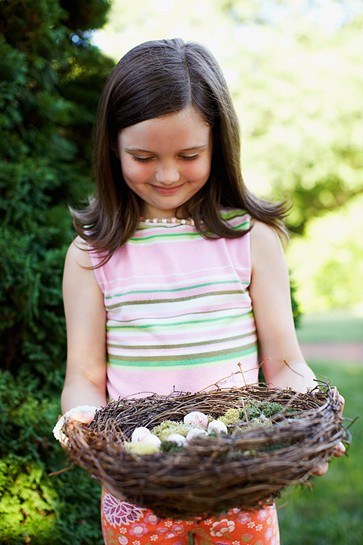
Activities for Selecting Interesting Details
- Picture This! Select a common activity, such as shopping. Ask your students to sketch a picture of the activity, setting the scene with questions such as, "What is the name of the store? Who are you with? Who else is around you? What aisle are you in? What do you see as you look straight ahead? To your left? To your right? If you reached out to touch something, what would it be? Is music playing in the background? What other sounds do you hear? Do you have a cart? What's in it?" Questions like these give students ideas for details. Collect all the drawings and show them to the class, one at a time, pointing out that even though everyone sketched the same idea, each child did it differently.
- I'm Making Dinner! This game has been around forever! It's a lot of fun and can help young writers uncover details about a topic. Begin this round-robin game by chanting, "I'm making dinner and what do I need?" Choose a word beginning with the letter A, such as apple. Write the word on the board and select a student to do the next letter. Everyone recite, "I'm making dinner and what do I need?" The chosen student answers with a B word- B, bread -and then on to the next child and letter until everyone has had a turn and you've recorded a word for each letter. Ask children to choose their favorite two or three word choices and jot down at least three descriptive details for each word. Here's an example: Bread: warm, soft, crusty." These sensory details can be used later for sparking a creative writing idea.
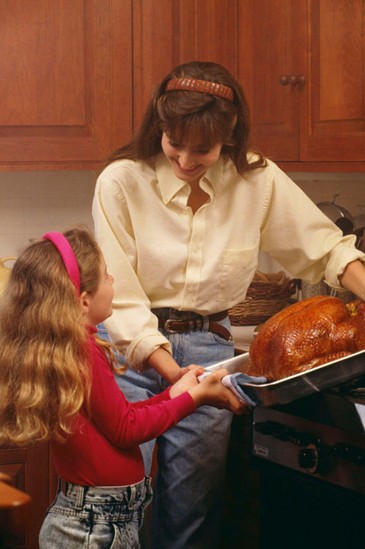
Activities for Clear Content
- Questions, Anyone? Get into the good habit of recording on the board any questions that arise during oral reading and discussion. If the kids are reading an article about tropical storms, ask them what they want to know that isn't covered in the article. How are the names of tropical storms and hurricanes selected? Has climate change altered the traditional paths of storms around the world's oceans? What part of the planet sees the worst storms? When the list grows to ten questions, have students select one and send them on an "information scavenger hunt", using encyclopedias, web sites, textbooks, nonfiction trade books, and the like. Jot the answers next to the original questions, discussing how this strategy can be used to strengthen the content of an original creative writing idea.
- Unlocking the Puzzle. This is a simple, enjoyable, hands-on activity that reinforces the importance of putting small pieces together to create a big picture. Through jigsaw puzzles, kids experience a metaphor for selecting relevant details that support, clarify, and express a main idea. Beforehand, locate five or six jigsaw puzzles (roughly 100 pieces each) and divide your class into small groups of students. Give each group a disassembled puzzle, but do NOT display the box covers! As students begin to assemble the puzzles, ask them to locate clues on individual pieces that might help them determine the larger images. Have each group keep a list of clues and predictions of the final images. When students complete the puzzles, ask each group to share with the class at what point they recognized the completed picture. Discuss with your class the fact that writing is comparable to assembling a puzzle. A creative writing idea needs a great many details to paint a clear picture for readers, and the details must be arranged in logical order.
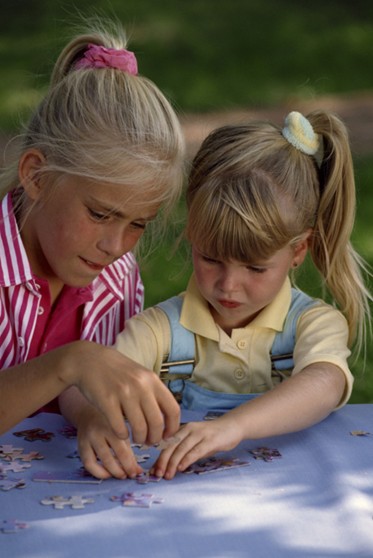
Some Final Thoughts on Generating a Creative Writing Idea
Deciding upon a creative writing idea may well be the most important part of the six trait writing process, because all writing- everywhere- begins with having something to say. Children will always be developing ideas because they must tackle them every time they write. The journey toward a clear creative writing idea can sometimes be a series of "three steps forward, two steps back", but by incorporating activities for finding topics, using effective details, and developing clear content, you give your class a fabulous set of tools for the journey!
Now that those writing ideas have crystallized, let's consider together how to organize them for the page. Click here for activities that shape organization.
Return from Creative Writing Idea to Creative Writing Tips
Return from Creative Writing Idea to Creative Writing Ideas and Activities
Helping You Write Across the Curriculum!
copyright 2009-2013 www.creative-writing-ideas-and-activities.com
Our Most Popular Pages
5. Writing a Personal Narritive
10. Elements of Persuasive Writing
Recommeded Resources:
AnyWord(TM) Spelling Practice Series!
Worksheets, games and activities to use with any spelling words. Three volumes in all!
Stop Essay Pain!
LitWorks.com
Resources to help students prepare for literature examinations.
Teach Kids Drama!





